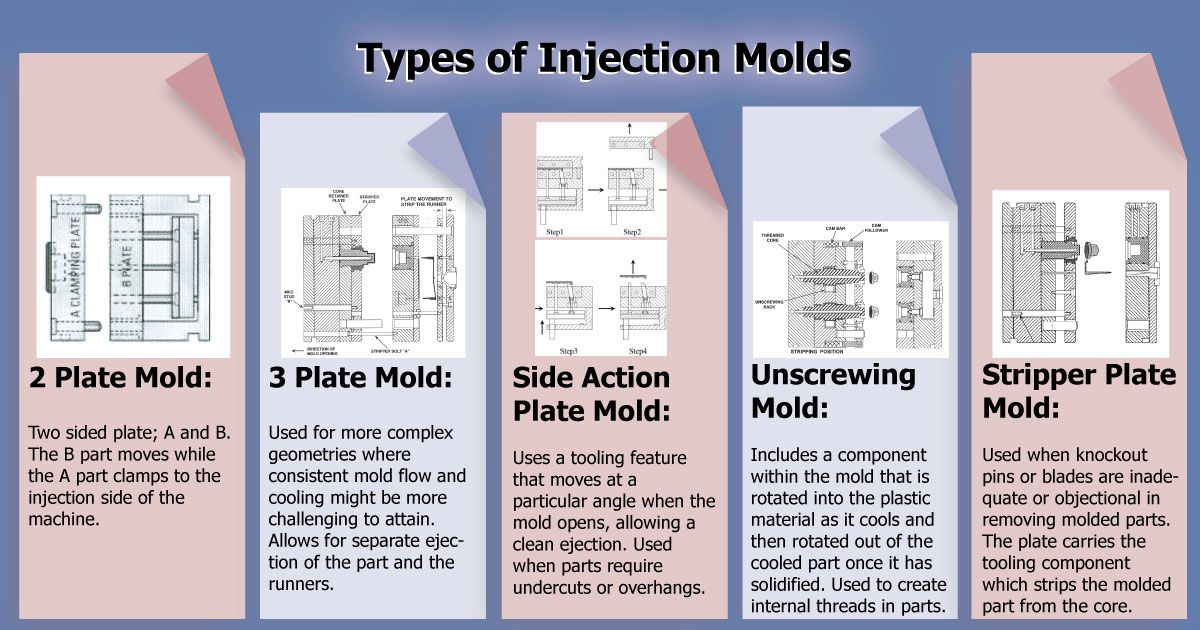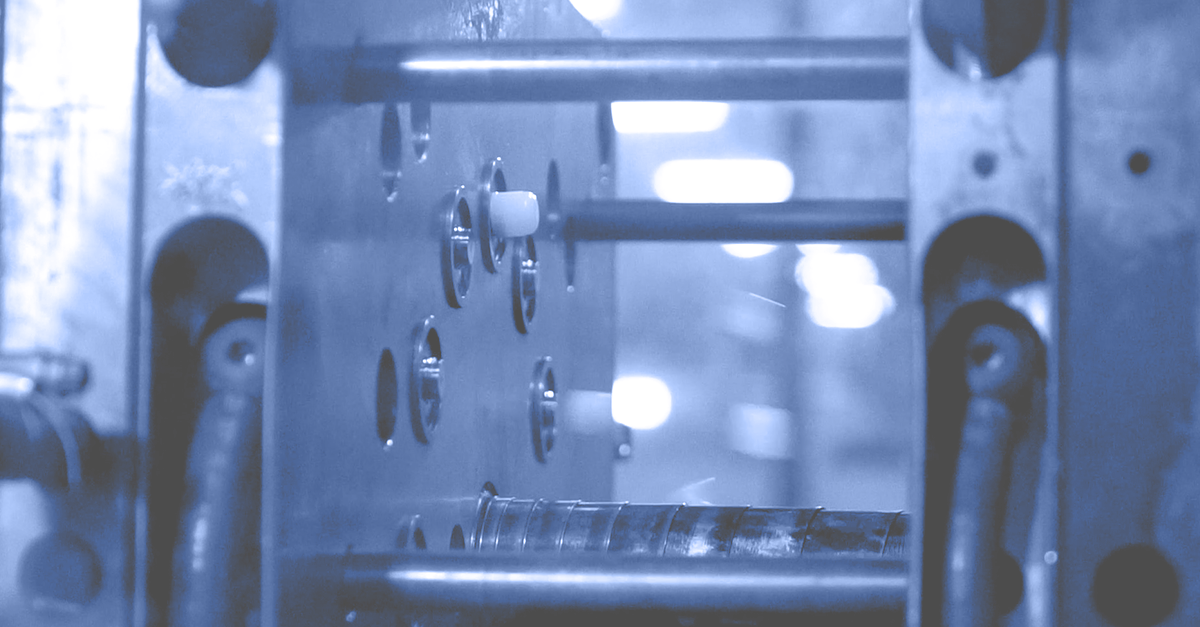Basic injection mold design is a simple principle: create a mold with cavities representing a “negative” image of the product, with a parting line through the middle so that the mold can open and eject the finished parts. While incredibly versatile, basic injection molding also has some limitations and “ground rules” as far as the geometries that can be achieved.

Beyond these basic types of molds, however, more advanced injection molding elements and tactics can be used to create features such as overhangs, internal threads, and more complex shapes. These include 3-plate injection molding, side-action injection molding, and unscrewing injection molds. We will now explore each mold type, including its use and its benefits.
Molding Techniques Beyond the Basics
3-Plate Injection Molds
What is it? These molds add an extra plate to the traditional 2-plate design (where the mold parting line occurs (usually) down the middle of the part, and material is injected into the cavity via gates located on the sides of the part. In 3-plate injection molding, the mold separates at not one but two locations (since there are not two but three plates), allowing for more flexibility in the mold — and product — designs.
When is it used? In a 3-plate mold, gates can be placed on the sides of the part and on the top or bottom of the part. For this reason, 3-plate molding is most useful for more complex geometries where consistent mold flow and cooling might be more challenging to attain in a traditional 2-plate mold.
What are the benefits? In addition to more complex geometries, 3-plate molds will typically result in higher quality due to more consistent material flow. These molds can also be used to enable separate ejection of the part and the runners — since the runners can be contained entirely in one of the plates — which can accelerate production cycles.
Side-Action Molds
What is it? In a traditional mold, the mold opens in a single direction, meaning that features such as overhangs and lips cannot be designed into the product since it would then be impossible to eject the part. A side-action mold solves this problem, adding a tooling feature that moves at a perpendicular angle to the axis when the mold opens and closes. The side action then retracts as the mold opens, allowing for clean ejection.
When is it used? Side-action molds are used for any feature that would prevent the easy ejection of a part. As mentioned, overhangs or undercuts are the most common application of side-action molds.
What are the benefits? Side-action injection molds allow for geometries that would otherwise be impossible to create in a standard injection mold. Using actions is an inefficient step that is unsustainable at high volumes due to the additional time required. Thus, side-action molds enable the speed and cost benefits of high-volume injection molding for parts that would otherwise need to be created through other processes.
Unscrewing Injection Molds
What is it? A rotating-core mold, or an unscrewing mold, includes a component within the mold that is rotated by a motor or other means into the plastic material as it cools. It is then rotated out of the cooled part once it has solidified.
When is it used? This type of mold is used to create internal threads in parts. It would otherwise be difficult or impossible to eject a part with a threaded feature since threading is a series of small overhangs in the part (which cannot be efficiently achieved with a standard mold).
What are the benefits? Rotating-core molds facilitate fast, efficient production of threaded parts, a feature that is otherwise difficult, costly, and time-consuming to create (whether through machining or other means).
At Crescent Industries, we offer a wide range of injection mold tooling capabilities, including side-action molds, unscrewing molds, and 3-plate molds. We are ready to share our experience with you to design and build the right injection mold for your product. Visit our website for more information.
Resources:
https://www.crescentind.com/tooling
https://www.myplasticmold.com/what-is-3-plates-plastic-mould.html
https://www.improve-your-injection-molding.com/3-plate-mold.html
https://www.fictiv.com/articles/side-actions-to-produce-impossible-injection-molded-undercuts
http://www.pfa-inc.com/pdfs/Moldmakingarticle2partsweb.pdf
http://www.janler.com/UnscrewingRotatingCoreMolds.html


